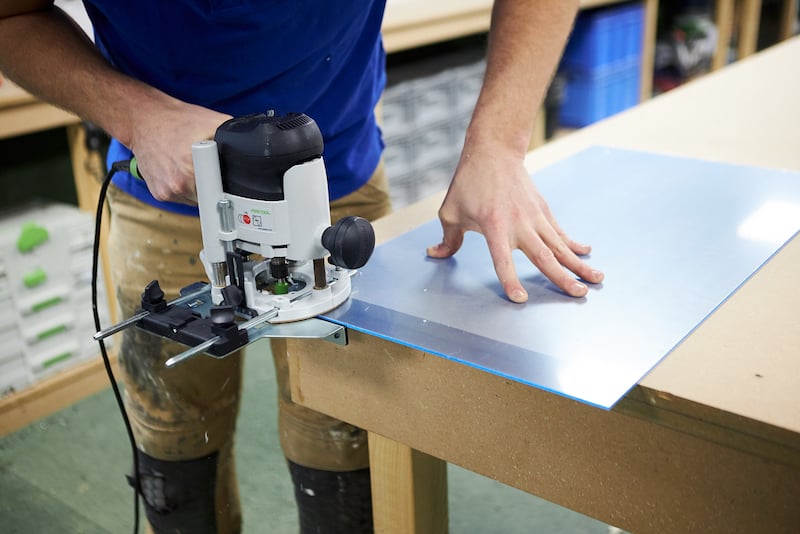Polycarbonate CNC milling is relatively easy with the right preparations. Milling offers an advantage over sawing in that it gives you a better edge finish. You can also mill complex shapes more accurately than by sawing. Milling is the ideal method for making house letters, numbers and nameplates. Read on to discover the best way to tackle polycarbonate milling.
Polycarbonate milling requirements:
1. Use a router or wood milling machine
Professionals and DIYers alike can mill polycarbonate, but it’s essential to use the correct milling tool. Where professionals often CNC mill plastic using multi-axis CNC milling machines and flatbed milling tables, as a home DIYer you can work effectively with a wood milling machine or router. With a router, you can mill grooves and profile edges in your polycarbonate sheet or mill out shapes using templates. A router is also suitable for precision sawing.
2. Make sure you have a sharp cutter
Before you start milling polycarbonate, check that your milling machine has a sharp cutter and that the chip removal is good. If your milling machine has a connection for a vacuum cleaner, we recommend using it.
3. Select the correct cutter diameter cutter
Use single-edged carbide (HSS) cutters and select the correct cutter diameter. If you’re going to mill a panel of thickness up to 5 mm, use a 4mm diameter cutter If the panel thickness is between 5-10 mm, choose a cutter diameter with a maximum diameter of 6 mm. It’s best to rout panels thicker than 10 mm with an 8-10 mm cutter.
Expert tip: For smaller cutters, use a higher speed than for thicker cutters. Find the right speed by test milling pieces of scrap material.
4. Support the polycarbonate while milling
Support both the panel and the milling cutter while milling. By placing the panel on a solid surface, you prevent vibrations while machining. Opt for a surface into which the cutter can run, such as a wooden board. Support the top of the panel well so that it presses against the surface. To do this, use slats and clamps or clamps that support the panel along the milling line.
5. Mill in several steps
Thicker sheets usually have to be milled in several steps. If you omit to do this, you won’t get a clean edge finish. You can mill thin panels up to a thickness of 5 mm in one go. Make sure that you mill against the direction of rotation of the cutter; this gives a cleaner milling edge. We recommend milling panels up to 10 mm in two steps and larger panel thicknesses in four steps. Run your cutter a little slower the fourth time for a better edge finish.
Buying polycarbonate sheet material
In our webshop, you’ll find clear polycarbonate, white polycarbonate and tinted polycarbonate in various thicknesses. We saw the sheets cut to size for you free of charge and you’ll receive your order as soon as possible.
CNC mill polycarbonate shapes
Do you want to have polycarbonate milled into a shape, such as a circle, hexagon, semicircle or square with rounded corners? Go to the page of your product and select your shape and dimensions. Our laser machine then cuts your shape to the millimetre. If you’d like to find out more about milling plastic and machining polycarbonate, please get in touch. And of course, if you have any questions about this blog, don’t hesitate to contact us.



